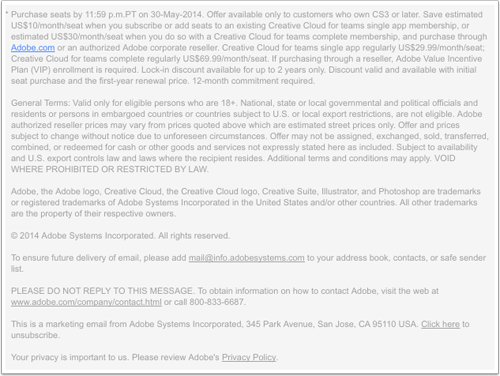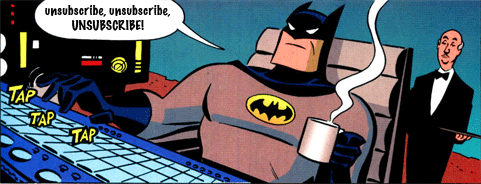Testing your opt-out process
- josh
- June 19, 2015
- Best practices
When was the last time you tested your opt-out process? Did you just click the unsubscribe link to see if the page loaded? How did you confirm the email address was unsubscribed?
If you have a Gmail account, Gmail allows you to use unlimited aliases. For example, if your Gmail email address is josh@gmail.com, you can add the + symbol to your email address to create an alias. An example of an alias would be josh+test1@gmail.com. Sending an email to josh+test1@gmail.com gets delivered to the mailbox for josh@gmail.com.
On your next mailing add a Gmail alias email address like josh+unsubtest06192015@gmail.com to be included with the mailing. After sending the mailing, find the email sent to the alias address and go through the unsubscribe process. After unsubscribing, log into your ESP or mailing software to confirm that the alias email address was successfully unsubscribed. Testing the unsubscribe process ensures that the landing page for the unsubscribe is working and that your ESP is registering the unsubscribe request.
A few reminders about your unsubscribe page:
- The unsubscribe link shouldn’t automatically remove the subscriber as some filtering devices scan the links within the message and may automatically unsubscribe the user.
- Brand the unsubscribe landing page to be similar to your website or the email message.
- Include the ability to unsubscribe without asking for additional information as this is law in many jurisdictions, including the US.
- Unsubscribe links must remain active for at least 30 days after a mailing, and the longer the unsubscribe link remains active the better.
- Provide alternatives to just unsubscribing such as allowing the recipient to put a pause on receiving mail from you or reducing the number of messages they receive from you.

